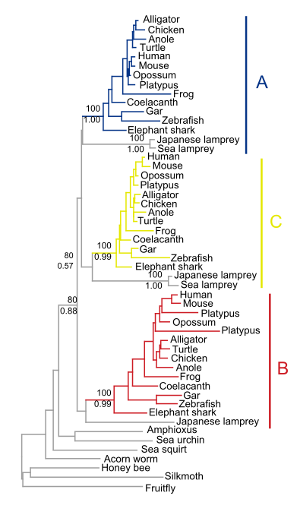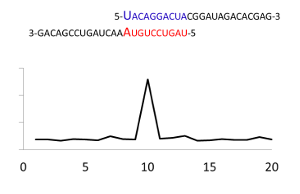What We Study
These are the different areas in which we focus.

Evolution of Animal Gene Families
Evolution of Animal Gene Families – An overriding theme in my lab is to better understand the connection between the emergence of novel genes and the origins of biological innovations. Relating to this theme, we 1) explore the different mechanisms involved in the origin of new genes, 2) assess the forces underlying the retention and functional variation of these genes, and 3) work to gain insight into the processes underlying intra- and inter-specific variation in the number and nature of genes in animal genomes. Our current projects include studies of the evolution of animal gene families trying to understand the emergence of novel genes via gene and genome duplication, to link these duplications to functional variation among paralogous members of a gene family. We pursue these questions using an integrative approach that involves combining bioinformatics and evolutionary genomics with perspectives from other disciplines such as molecular population genetics, cellular and structural biology, protein biochemistry and animal physiology that are brought by our collaborators. At present we are working on the globin, relaxin and Myb gene families of vertebrates.

Small RNA/TE Interactions
Small RNA/TE Interactions –Transposable elements (TEs) are genomic parasites that can propagate by making additional copies of themselves in a genome. TEs are major players in the evolution of genomes and TE mobilization is arguably deleterious. Understanding how genomes protect themselves from the challenges presented by TE invasion is a fundamental question in evolutionary genomics. In response to the challenge from TEs, genomes have evolved TE silencing mechanisms, which are often guided by PIWI interacting RNAs (piRNAs), a recently discovered class of small RNAs. From an evolutionary standpoint, TEs and piRNAs appear to be involved in an evolutionary arms race similar to that of pathogens and the immune system, and a portion of my lab’s research is focused on this general area. Aside from the antagonistic interaction between TEs and small RNAs described above, TEs can also act as the source of novel small RNA genes. We are pursuing several lines of inquiry in this arena, which range from the identification and putative function of tRNA fragments (tRFs), to researching a connection between mircroRNA repertoire expansions and biological diversification.